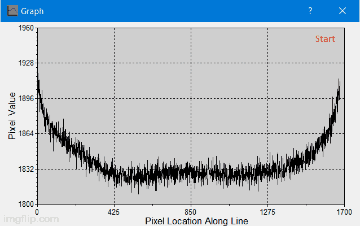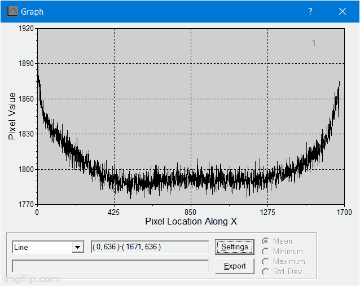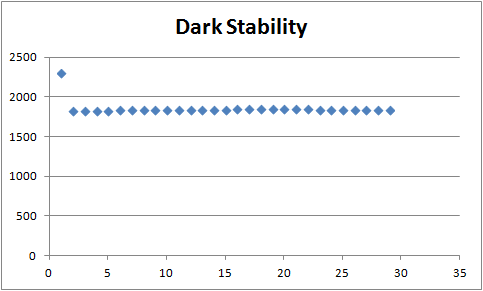In the course of chasing down a weird problem, a couple of issues came up in discussions with other people.
Does the Bias Master frame change at different temperatures?
I.e., do I need separate Bias Masters at each temperature, or does one master work at all temperatures? Maxim is clearly set up to use different temperatures.
I generated Bias Masters at several temperatures from 0C down to -13.5C. This was as low as I could go, since Arizona is still too warm for the camera to get any cooler. Forty subs were taken directly in Maxim and converted to the Bias Master in Maxim using the SD Mask combine of 40 subs. The subs were taken after the new temperature set point appeared to be stable (roughly 20-30 seconds after the set point was reached). I ran a couple of them twice to see how much variation might be seen from run to run. Also, I have a couple of older masters (1-2 years old) at -15C and -20C.
For each master I measured the median intensity at the center of the image using Maxim’s Information tool with the biggest aperture available (20 pixels).

It seems clear that the recently built masters are the same out to -13.5C. The colder ones are likely too old, which is why they are different. I would not expect some dramatic shift from -13.5C to -15C.
Is it necessary to wait some period of time for the CCD cooling to stabilize?
In discussions with Joe Mize (he has had a number of interesting points!), he pointed out that he waits a couple of hours for the CCD to stabilize before taking Bias frames (he calls this “cold soaking”).
As a typical impatient person, I generally set the cooling target, set up the AutoSave sequence to take the desired Bias and Dark frames, then start the imaging. The Bias subs are taken first, for no particular reason. As the temperature approaches the set point the temperature typically oscillates a bit around the set point as the system control settles. This usually happens for 15-30 seconds. Once the cooling target appears to be stable I start the AutoSave acquisition.
Now Joe indicates I need to wait a couple of hours:(
So, I did a couple of runs. Run 1: I set the cooling point to -10C, waited as usual for the temperature to settle, and took a set of 40 Bias subs. These were combined into a master in Maxim’s Set Calibration tool using SD Mask median combination. I then used the Graph Information tool to draw a horizontal line in the exact center of the image.
After 30 minutes I took another set of 40 subs and created another master. I repeated this process at 1 hour and 1.5 hours. The following animated gif flips among the resultant graphs. The red text at the upper right indicates the elapsed time before creating the master.

It appears that the initial master is in fact somewhat lower than the subsequent graphs by 32 counts (about 1.5%). After 30 minutes the graphs seem to be relatively consistent. So, it looks like I do in fact need to wait perhaps 30 minutes.
Run 2: I turned the system off for about three hours, then repeated the test. This time I created a master every 5 minutes in order to get a better estimate of when it has stabilized.

I should have changed the label at the top; 1 is the first master, 2 is after 5 minutes, 3 is after 10 minutes, etc. It looks like by 10-15 minutes the masters have equilibrated.There is less of a shift (15 counts, or 0.75%); perhaps the system didn’t completely warm up from the previous test.
So, it looks like I should let the system cool for 15-30 minutes before starting the Bias frames.
I might expect the same effect when taking darks. However I expect the issue to be less noticeable since the subs are typically 15 minutes or so; the first sub might be off but subsequent subs should be equilibrated. There might be an effect if doing short subs like 1 minute.
Another Measure
I was reading an interesting article Signal to Noise: Part 3 – Measuring your Camera by Craig Stark. I thought it would be fun to go through the exercise of measuring the various characteristics of my STF8300M.
One of the checks is this very topic – how long does it take your camera to cool to a stable temperature? His approach is to turn on the cooler, then start taking 1 minute dark frames. He expects to see a pattern in the beginning followed by a steady state dark median after some time.
In my case, the camera reached the target within 1 minute! Only the first dark showed any significant difference while the camera cooled.

